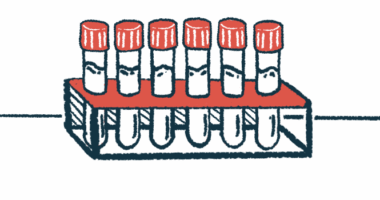DNL343, fosigotifator fail HEALEY platform trial’s main goal in ALS
Therapies safe, well tolerated; didn't aid muscle strength, respiratory function

The investigational oral therapies DNL343 and fosigotifator didn’t significantly slow disease progression in people with amyotrophic lateral sclerosis (ALS) compared with a placebo, and therefore failed to meet the main goal of their respective arms in the HEALEY platform trial.
While they were found to be safe and well tolerated, both therapies also failed to meet key secondary goals, including measures of muscle strength and respiratory function. An exploratory high dose of fosifotigator, or ABBV-CLS-7262, was associated with a significant slowing of muscle strength declines relative to a placebo, however.
“Though the initial top-line clinical results of this trial were not what we hoped, the data collected is valuable in helping to understand the next stage of ALS research,” said Merit Cudkowicz, MD, the HEALEY trial principal investigator, said in a press release from Massachusetts General Hospital (MGH) in Boston, where she serves as director of the Sean M. Healey & AMG Center for ALS.
Additional analyses from both trial arms are planned, including measures of disease biomarkers, data from patient subgroups, and long-term data from the study’s extension period. Cudkowicz, who’s also chair of neurology at MGH and a professor at Harvard Medical School, said the Healey Center remains “deeply committed” to fully understanding the effects of these investigational therapies in ALS and will “further evaluate the data before determining next steps.”
Denali Therapeutics’ DNL343 and fosigotifator, which is being co-developed by Calico Life Sciences and AbbVie, are oral small molecules designed to activate eIF2B, a protein involved in a molecular pathway called the integrated stress response (ISR), whose excessive activation is believed to contribute to the formation of toxic protein clumps that damage nerve cells. By activating eIF2B, the treatments should help turn off the ISR pathway, thereby helping clear the clumps and protect nerve cells.
Each therapy is being assessed in its own arm of the HEALEY platform trial (NCT04297683), which is designed to simultaneously test multiple experimental ALS treatments against a shared placebo group, an approach that’s intended to reduce costs and speed the development of new ALS therapies.
HEALEY has continuously enrolled adults whose symptoms first appeared within the last two years across sites in the U.S. Once someone is deemed eligible through the trial’s master protocol, they’re randomized to participate in any active treatment arm.
Testing DNL343, fosigotifator in HEALEY trial
The main goal of all the arms is to evaluate a treatment’s ability to slow ALS progression and prolong survival, as assessed by the ALS Functional Rating Scale-Revised (ALSFRS-R), after six months. New arms will be assessed for 36 weeks, or about nine months, following a recent amendment.
In the fully enrolled DNL343 arm (NCT05842941), 186 participants were randomized to receive daily oral DNL343 and were compared to 139 people who received a placebo in this arm (63 patients) or a concurrent arm (76 patients).
Disease progression wasn’t slowed with DNL343 relative to the placebo group, meaning the main goal wasn’t met. Key secondary endpoints, including measures of muscle strength and respiratory function, also weren’t met.
“We are deeply grateful to the study participants, investigators, and the broader community for their collective support of the HEALEY study, which has provided an efficient and innovative platform for evaluating the therapeutic potential of DNL343,” Carole Ho, MD, chief medical officer of Denali, said in a company press release. “We look forward to a more comprehensive analysis of the study results.”
In the fosigotifator arm (NCT05740813), 155 people received the primary investigational dose of treatment, taken orally once daily, and 79 received an exploratory high dose. They were compared to 126 people who received a placebo in this arm or a concurrent one.
As with DNL343, disease progression wasn’t significantly slowed with the primary dose of fosigotifator relative to a placebo. Measures of survival, respiratory function, and muscle strength also didn’t differ.
But data from the exploratory high-dose group suggested some benefits on muscle function. The patients who received this dose exhibited a 32% slower decline in upper extremity muscle strength than the shared placebo group, and a 62% slower decline in lower extremity muscle strength. There was also a trend toward slower respiratory decline among people who received the high dose.
“While the results of this regimen did not meet the trial’s primary or key secondary outcome measures for the primary dose at Week 24, the findings at the exploratory high dose on muscle strength in both upper and lower extremities and possibly in respiratory function suggest that this target and approach need additional investigation,” Cudkowicz said in a separate MGH press release that announced the data on fosigotifator.







